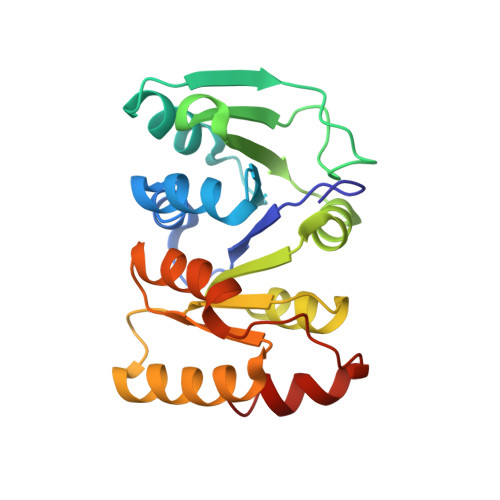NMR structure determination for larger proteins using backbone-only data.
Raman, S., Lange, O.F., Rossi, P., Tyka, M., Wang, X., Aramini, J., Liu, G., Ramelot, T.A., Eletsky, A., Szyperski, T., Kennedy, M.A., Prestegard, J., Montelione, G.T., Baker, D.(2010) Science 327: 1014-1018
- PubMed: 20133520
- DOI: https://doi.org/10.1126/science.1183649
- Primary Citation of Related Structures:
2KS6 - PubMed Abstract:
Conventional protein structure determination from nuclear magnetic resonance data relies heavily on side-chain proton-to-proton distances. The necessary side-chain resonance assignment, however, is labor intensive and prone to error. Here we show that structures can be accurately determined without nuclear magnetic resonance (NMR) information on the side chains for proteins up to 25 kilodaltons by incorporating backbone chemical shifts, residual dipolar couplings, and amide proton distances into the Rosetta protein structure modeling methodology. These data, which are too sparse for conventional methods, serve only to guide conformational search toward the lowest-energy conformations in the folding landscape; the details of the computed models are determined by the physical chemistry implicit in the Rosetta all-atom energy function. The new method is not hindered by the deuteration required to suppress nuclear relaxation processes for proteins greater than 15 kilodaltons and should enable routine NMR structure determination for larger proteins.
Organizational Affiliation:
Department of Biochemistry, University of Washington, Seattle, WA 98195, USA.














